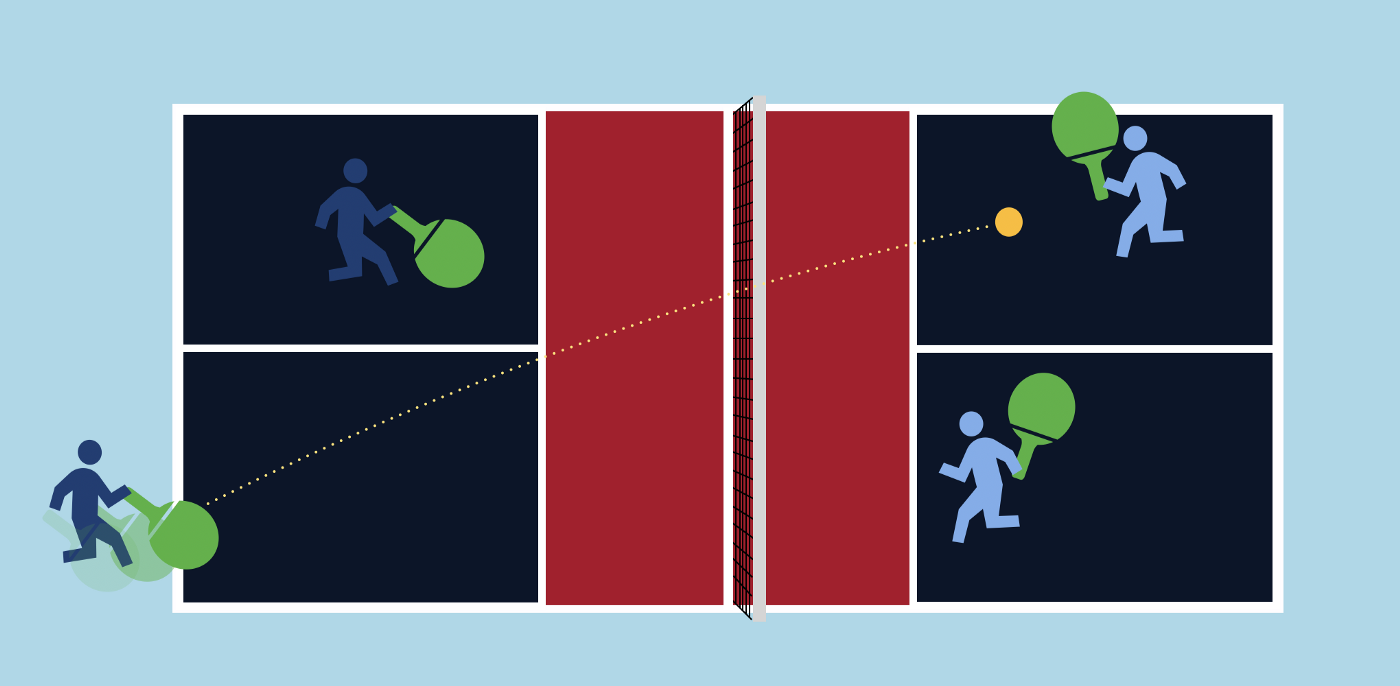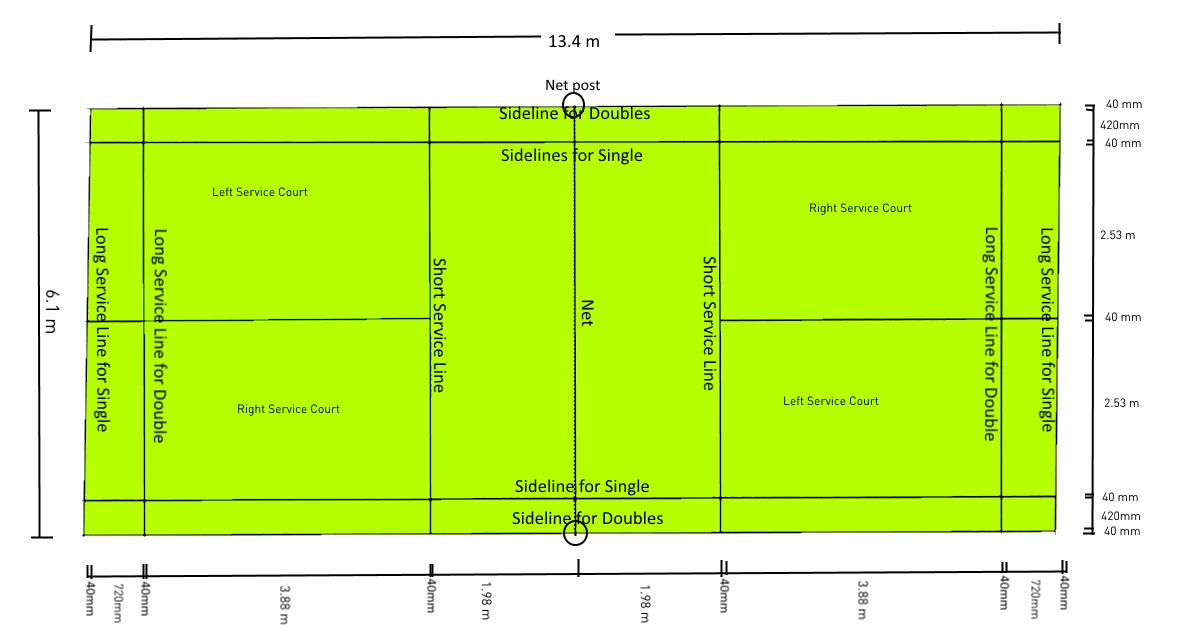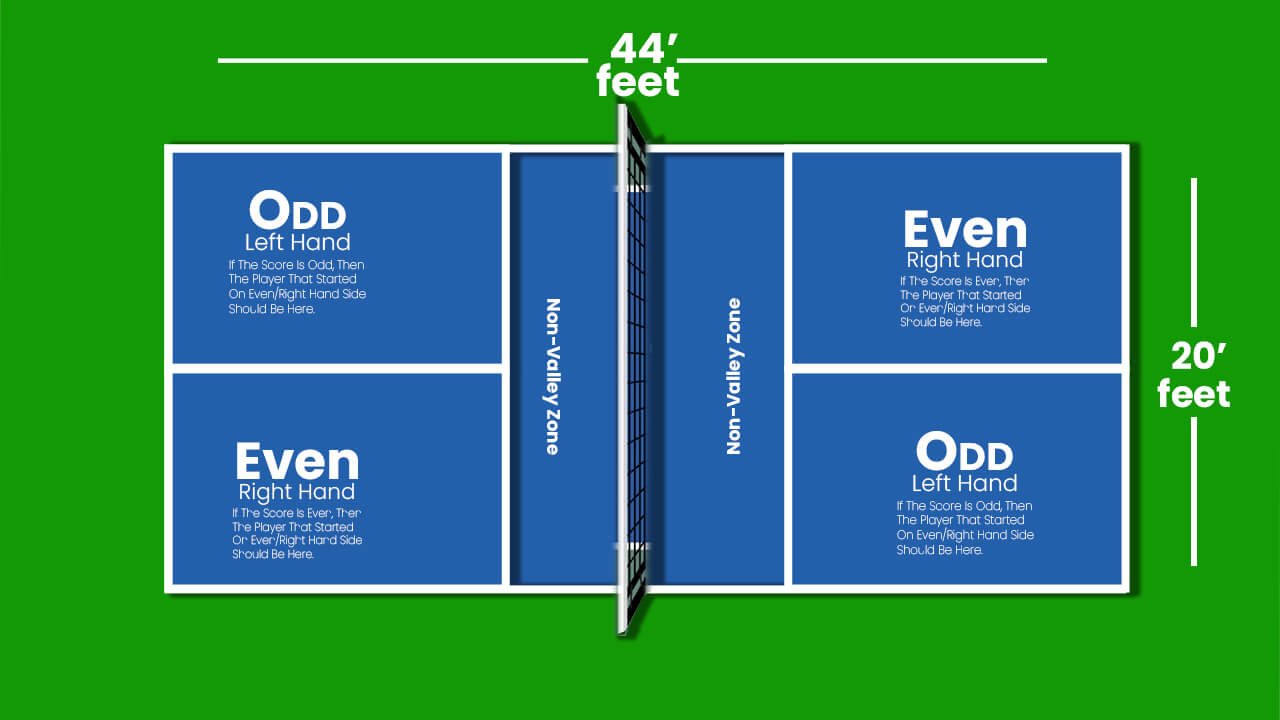
Volleyball is a sport played by two teams of six players on a court. Teams will often attempt to set an offensive and defend against an attacking team. The game ends when one team is clear by two points. Points can be earned by hitting, passing or playing a set. Games typically last between three and five sets. You may find that they are shorter if you play at a high level.
The attack line is a line that divides the volleyball court in two equal parts. The "weak side" is the one that is used. This side is left-handed for spikers who are right-handed, and the other is left-handed for spikers who are left-handed.
Each player on a team holds a particular position. The front-row consists of three players, and the back-row consists of three players. The front-row will jump in front of an opposing spiker when the spiker comes into contact with the ball. Players can also take advantage of the "A," "B," "C," "D," or "Pipe" and the "Bic" to intercept a spiked ball.

A player must be behind the 3 metre long service line to serve. It is located between the baseline and the end line. Serves can be made overhand or underhand. The serving team has a better chance of winning points if they serve overhand. In the 1996 Olympics, the service area was extended to 9 metres.
Volleyball rules stipulate that players cannot block the ball after it is served. The server cannot step on the line of service until the player has hit the ball.
After the first hit, a player is allowed to hit the ball up to three times. If the same player hits the ball twice in a row, it is a foul. According to the volleyball rules, one player can only hit the ball once.
On an attack, a back-row player hits the ball from behind the attack line, which is a line that separates the attack and back-row positions. The back-row player is not allowed to block or hit the ball above the net. It is also against the law for a back row player to attack the ball if the ball is within the offensive line.

A serve is when a back-rower hits the spiked ball above the net. The ball can then drop into the opposite half of the court. If the ball lands against the wall, on a stand by the referees, or on the antennae it is out.
The volleyball game ends after one point. If the defense commits an error, the offensive team will score. However, if a defense error is made, the opponent will score.
The point will be over and the players will then be rotated around on the court. At any one time, six players may be present on the court. Rotations must be done counterclockwise with three people in front and three behind. There is a limit of two time-outs per set.
FAQ
Are there any exercises that I shouldn't do or should I?
Before starting any new exercise program, you should consult your doctor. You might have injuries or conditions that make it impossible to do certain types of exercise. Also, some activities require special equipment or training. Swimming, for example, requires swimming suits and access to the pool.
Do I need heat before exercising?
Warming up before a sport can help reduce muscle soreness and increase performance. There are many methods you can use to warm up, including running, jumping rope and stretching. You can start slowly and increase your intensity gradually.
Is it safe?
If possible, go outside. It's not just the air temperature that determines whether outdoor exercise is safe. Also, visibility, wind speed and humidity all play a significant role. Layers of clothing should be worn if you are exercising outside in inclement temperatures.
Which Is more important? Exercise, diet, sleep?
The answer depends on what you want to achieve. If you want to lose weight, diet is the most important factor. For building muscle mass, exercise is key. Because it affects your performance during the day, sleep is the most important factor.
Statistics
- In high-income countries, 26% of men and 35% of women were insufficiently physically active, as compared to 12% of men and 24% of women in low-income countries. (who.int)
- Adolescent girls were less active than adolescent boys, with 85% vs. 78% not meeting WHO recommendations of at least 60 minutes of moderate to vigorous intensity physical activity per day. (who.int)
- Physical activity confers the following maternal and fetal health benefits: a decreased risk of pre-eclampsia, gestational hypertension, gestational diabetes (for example, 30% reduction in risk) (who.int)
- Globally, 81% of adolescents aged 11-17 years were insufficiently physically active in 2016. (who.int)
External Links
How To
How to Stay Fit While Pregnant
You experience many changes during pregnancy. Your metabolism slows down and your body eats less as you have a baby. You may feel sick if your sleep is not enough. You don't have to be sick to enjoy this moment in your life. There are ways you can make sure you stay healthy!
Before beginning any exercise program, consult your doctor. They can tell you what exercises you should avoid and which ones are safe for you to do. Also, ensure you eat well all through your pregnancy. This means eating lots of protein, fiber and iron. Third, it is important to drink plenty. It's especially important to drink water when you're exercising since you lose a lot of fluid through sweat. Last, take good care of your feet. Wear shoes that are supportive and dry. Take small bites of toast or crackers if morning sickness is a problem. You might end up feeling nauseated.
-
Healthy eating habits are important. It is essential to eat a healthy diet throughout pregnancy.
-
Get active. Get active for at least 30 minutes each day.
-
Keep a healthy weight You can lose weight by eating smaller meals and snacks more often.
-
Get enough rest. Try to get 7-9 hours of sleep each night.
-
Manage Stress. Learn relaxation techniques.
-
Avoid Alcohol. It may lead to miscarriage and birth defects.
-
Be gentle with your self. Don't push yourself too hard.
-
Take care of yourself. It is important to have someone keep an eye on you whenever you feel the need.
-
Relax. Do the things that make your heart happy.